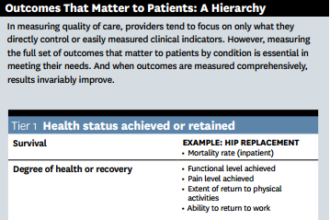 It’s a milestone for every new parent, when your first child is born and you begin to look at your house in a new way. The comforts of home: accessible electrical outlets, the designer coffee table, lots of cabinet space, and a spiral staircase… now represent accidents just waiting to happen.
It’s a milestone for every new parent, when your first child is born and you begin to look at your house in a new way. The comforts of home: accessible electrical outlets, the designer coffee table, lots of cabinet space, and a spiral staircase… now represent accidents just waiting to happen.
 It’s a milestone for every new parent, when your first child is born and you begin to look at your house in a new way. The comforts of home: accessible electrical outlets, the designer coffee table, lots of cabinet space, and a spiral staircase… now represent accidents just waiting to happen. “Project babyproofing” begins and a walkthrough assessment of the home is made, with risks identified along with their corresponding mitigation plans: outlet plugs, baby gates, cabinet locks and coffee table bumpers.
It’s a milestone for every new parent, when your first child is born and you begin to look at your house in a new way. The comforts of home: accessible electrical outlets, the designer coffee table, lots of cabinet space, and a spiral staircase… now represent accidents just waiting to happen. “Project babyproofing” begins and a walkthrough assessment of the home is made, with risks identified along with their corresponding mitigation plans: outlet plugs, baby gates, cabinet locks and coffee table bumpers.
This same risk-mitigation strategy can be applied to patients going in for surgery. The surgical episode is fraught with risks for the patient from pre-op decisions all the way through post-surgery recovery. In order to succeed, providers must perform a thorough “risk-proofing project” to eliminate or minimize as many gaps for them as possible.
Now I’m not advocating that healthcare providers “baby” their patients in a patronizing way, but those who live hospital life every day must realize that this is a foreign land for an outside individual. First of all, they do not have the privilege of the knowledge that comes with a medical degree or the years of experience in how the system works. Secondly, at this particular time in their life, they are sick, in pain and/or anxious, and so may not be functioning at the top of their potential. These predispositions make it imperative that their episode of care should be standardized and optimized to make it as easy as possible to stay on course.
Here are four classes of patient risks that need to be addressed by your program:
- Expectation Risks
All parents learn that a small amount of expectation setting can go a long way. They know starting a car trip with a statement like: “We are going to the store and you can pick out 1 item to put into the cart and that’s it,” can mitigate tantrums down the line from misaligned expectations. Similarly, surgeons need to lead with messaging that says: “After surgery you will be returning home on post-op day 2,” to make sure patients are prepared for this transition when it arrives and have their home environment ready. Setting and aligning patient expectations can lead to better outcomes and higher satisfaction. - Decision Risks
Patients may not realize that the decisions – the choices – they make can greatly affect their outcomes. Patients must be informed of their options, the costs and benefits of each one, as well as some guidance on how to make good choices. Shared and informed decision-making in a patient-provider partnership means risks and results can be managed and tracked. - Coordination Risks
Moms and dads are masters of juggling schedules and transitions. From getting kids off to school with homework in their backpack and breakfast in their bellies, to making sure they get to soccer practice with their equipment and treats for the team, coordinating day-to-day can seem like a full-time job. Likewise patients need clear directions and the occasional handholding along their journeys, filled with reminders (“Did you schedule your pre-op assessment?” “Don’t forget your Hibiclens scrub!”) and open communication between episode partners. - Compliance Risks
Fear is a powerful motivator, and one of the fundamental things kids learn is that there are consequences to their actions. It’s key that patients know what could happen if they don’t follow their hip precaution guidelines or if they don’t call for a nurse before getting up to go to the bathroom with a nerve block still in place. Make sure your patients know the “house rules” and why it’s important to follow them.
Miscommunications will inevitably still happen, as well as accidents. But wouldn’t you feel better knowing you’ve done everything possible to “risk-proof” your program for your patients? After all, every patient is someone’s child or mother or brother, so why not treat them like one of your own?
risk / shutterstock






